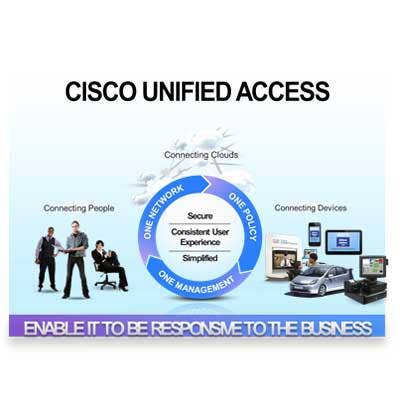Avaya CTO: 'We Scale Much Better' Than Microsoft Skype For Business

Building On Success
Avaya CTO Laurent Philonenko says its competitors Cisco Systems and Microsoft have "rudimentary" and less scalable solutions in the unified communications space compared with those of his Santa Clara, Calif.-based company.
Avaya was recently named a leader in the unified communications space by research firm Gartner alongside Cisco, Microsoft and Mitel, thanks to its Avaya Aura Platform -- the company's flagship UC product for enterprises -- as well as its greater flexibility and openness in the space, which Philonenko says he plans to build on.
Philonenko talked to CRN about Avaya's technology road map for the future, its UC technology compared with that of the big competitors, and how it is helping channel partners drive sales through UC-as-a-Service.

How does Avaya's Aura Platform stack up against Microsoft's Skype for Business, formerly Lync?
Versus Microsoft, it's fair to say that when you compare apples to apples for large-scale enterprise communications, we still have a significant feature and scale advantage, and better deployability, resiliency, security -- we scale much better than Lync. I don't think there is too much argument about that.
So clearly, Lync is a factor, we recognize it, customers have [it] deployed. Our view on Lync is to not tell customers not to use Lync, it's to integrate Lync better into their Avaya environment. We can make international video calls high-quality with Lync. You can use Lync to trigger a call to your customer, but we will make that call quality better because it will run on the Avaya infrastructure.

How does Aura stack up against Cisco's UC Manager?
Cisco is a slightly different competitor. What we do better is things like session management. Cisco's session manager, which fits above the communication manager, it's a bit rudimentary compared to ours. So for large enterprise at scale from an administration point of view, co-routing and contact center routing, I think we have an edge.
In an Avaya world, we're able to move virtual machines across networks without losing a call. So the call lives in the virtual machine and travels with the virtual machine, so that's a very big thing for global enterprises. One thing to think about us against Cisco and Microsoft: We are the specialists in that world of communications and we do that technically better than anything else.

What is Avaya doing on the UC-as-a-Service front to help drive partner growth?
We are a channel-driven company and that's not going to change even in the cloud world. [With] cloud, there is not a one-size-fits-all approach -- this is where we also differentiate [our business] from Cisco and Microsoft. So we have several cloud models. We have models which are with service providers where we build a platform with them and then they manage and operate the service. We have licensing or pay as you go, subscriptions -- that’s one model.
The second model is, our Customer Engagement OnAvaya recently became available with the underlying platform being Google, powered by Google Cloud Platform. That is a midmarket contact center solution, which is fairly unique. We run that multi-stance, multi-tenant platform for customers, but it's sold by partners. As a partner, you could go to the partner portal to deliver that to customers.

What about on the private cloud side?
Many large customers want more private cloud because they don't feel the public cloud is for them. So we have a thriving private cloud business as well. We want to enable more and more partners on those cloud services.
The way we look at it is managing, operating, setting up those private and public cloud customers -- there's a lot of services to be delivered there. With the Engagement platform, there is a ton of new added value that can be captured by partners.

What is you strategy to utilize Avaya's acquisition of Esna Technologies this year?
Esna Technologies is one proof point of that strategy of openness. It supports our ability to enable business applications by allowing users to access unified communications from within their cloud-based applications like Microsoft 365, Google, Salesforce. So we offer more flexibility to our customers on how they want to communicate. It doesn't need to be all Avaya, it could be a mix of Mitel, Cisco, Salesforce or what have you, because we absolutely believe the world is diverse and people spend their time in different applications, and that’s where you need to be.

Is openness a strategy for your technology road map?
Openness is a key strategy because it means you open the communications platform to applications in a very powerful way, and you also make sure you allow people [access] to communication wherever they live. They can live in a Cisco world, a Microsoft world, and you want to enable all of that.
We haven't seen any reluctance from customers to continue with Esna in a multi-vendor fashion. So we're continuing to do more of that.
Our Avaya Engagement open platform is one of our ways to open what we do by allowing third parties to give very simple plugins to create and customize business applications. It's a fantastic opportunity for our channels to add value in a very simple way, because all of a sudden you fix a business problem which is very evident to the customer.

What else is on Avaya's technology road map?
We're going to be very active in analytics. That's an area where call centers are converging and we have big projects in that space. Also you need to have mobile capabilities.
Then underlying all of that, you have a move to software -- we are increasingly virtualizing everything. We're continuing in the direction for our contact center and UC products and networking products. We announced an SDN Fx fabric, so we are going to continue and make that even more software.

What will Avaya look like in a few years?
We want to make sure that the whole environment of openness, mobility and a new generation of applications [is] an absolute reality. We've been talking about convergence for a long time, but we now believe it’s the time for it to happen, and we are really seeing customers starting to do things they were not doing a year ago.
We want to be even more in the application space and have people use Avaya even more for applications than they are doing today beyond contact centers.